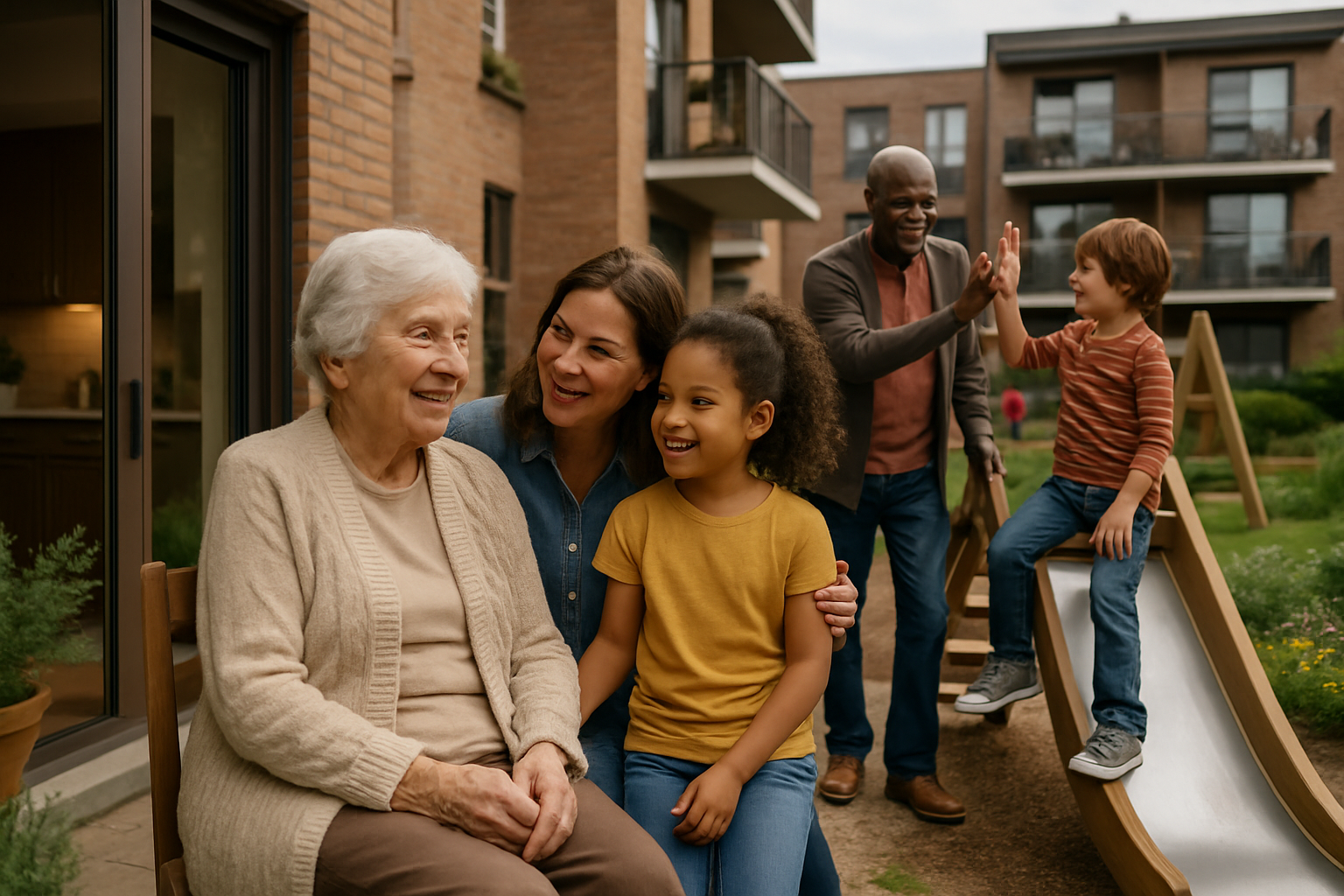The Silent Revolution: Intergenerational Cohousing in America
Imagine a vibrant community where retirees mentor young professionals, children have dozens of surrogate grandparents, and neighbors of all ages share meals, skills, and daily life. This isn't a utopian fantasy, but a growing reality in America: intergenerational cohousing. As traditional family structures evolve and loneliness epidemics loom, this innovative living arrangement is quietly reshaping social dynamics across the nation. Read below to explore how intergenerational cohousing is transforming communities and challenging our notions of age, family, and belonging.

As Baby Boomers entered retirement and Millennials faced housing affordability crises, the appeal of shared living spaces that bridged generational divides grew. Early pioneers like Quimper Village in Washington state and Bridge Meadows in Oregon demonstrated the potential for fostering connections between seniors, families, and young adults. These communities showed that intergenerational living could address multiple societal challenges simultaneously: social isolation, childcare needs, affordable housing, and the desire for purposeful aging.
The Mechanics of Intergenerational Cohousing
Intergenerational cohousing communities typically consist of 20 to 40 private homes clustered around shared spaces. These common areas often include kitchens, dining rooms, playgrounds, gardens, and multipurpose rooms. The key distinguishing factor is the intentional mix of age groups, with residents ranging from infants to octogenarians.
Governance in these communities is usually collaborative, with decisions made through consensus or sociocratic methods. Residents participate in shared meals several times a week, engage in community workdays, and often form interest-based groups for activities like gardening, music, or exercise. While privacy is respected, the emphasis is on creating opportunities for spontaneous interaction and mutual support across generations.
Sociological Impact on Participants
Research into intergenerational cohousing reveals profound effects on residents’ well-being and social connections. A study by the Journal of Housing for the Elderly found that seniors in these communities reported significantly lower levels of loneliness and depression compared to their peers in traditional retirement settings. They also showed improved cognitive function and physical health, attributed to the regular social engagement and sense of purpose derived from mentoring younger residents.
For families with children, the benefits are equally striking. Parents report reduced stress levels due to the informal childcare network within the community. Children in these settings demonstrate enhanced social skills, empathy, and respect for elders. Young adults, often struggling with isolation in urban environments, find a sense of belonging and mentorship opportunities that can be lacking in conventional apartment living.
Challenges and Criticisms
Despite its promise, intergenerational cohousing faces several hurdles in gaining widespread adoption. Zoning laws in many municipalities are not designed to accommodate this hybrid model of communal living, leading to lengthy approval processes. Financial institutions can be hesitant to fund such projects, viewing them as higher risk than traditional developments.
Critics argue that these communities may become insular, potentially reinforcing socioeconomic divides if not carefully designed for diversity. There’s also the challenge of managing conflicts between generations with different lifestyles and expectations. Some skeptics question whether the model is scalable beyond a self-selected group of like-minded individuals.
Future Prospects and Societal Implications
As awareness grows and successful models proliferate, intergenerational cohousing is poised for significant expansion in the coming decades. Urban planners and policymakers are increasingly recognizing its potential to address multiple social issues simultaneously. Some cities, like Minneapolis and Portland, have begun adjusting zoning codes to facilitate these developments.
The ripple effects of this housing model extend beyond individual communities. By fostering intergenerational relationships, these spaces challenge ageist stereotypes and promote a more integrated view of the life course. They offer a tangible response to the loneliness epidemic plaguing both young and old in modern society. Moreover, the emphasis on shared resources aligns with growing environmental concerns and the shift towards more sustainable lifestyles.
Reimagining Community in the 21st Century
Intergenerational cohousing represents more than just an alternative living arrangement; it’s a reimagining of community for the 21st century. In a world where digital connections often supersede physical ones, these communities offer a return to tangible, face-to-face relationships across age boundaries. They challenge the age-segregated model that has dominated Western societies for decades, proposing instead a more integrated, mutually supportive way of life.
As demographic shifts, economic pressures, and changing social norms continue to reshape American society, intergenerational cohousing stands as a bold experiment in addressing complex societal needs. While not a panacea, it offers valuable lessons in fostering connection, purpose, and resilience across generations. As this quiet revolution continues to unfold, it may well point the way towards more cohesive, sustainable communities for all ages.





